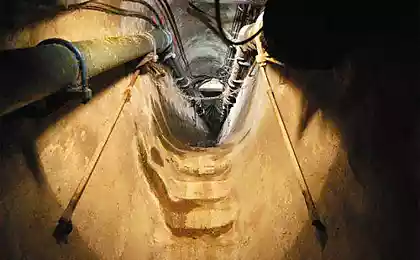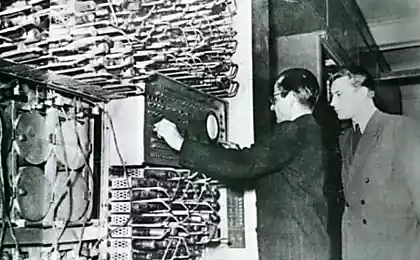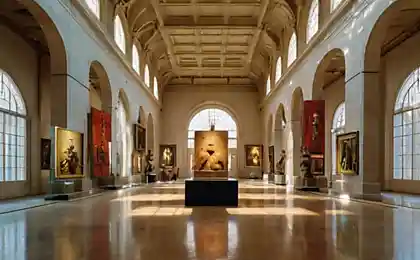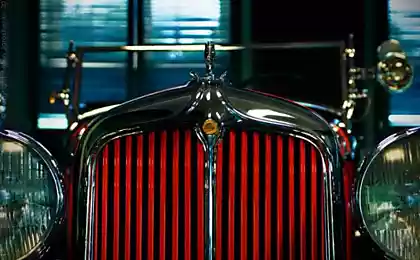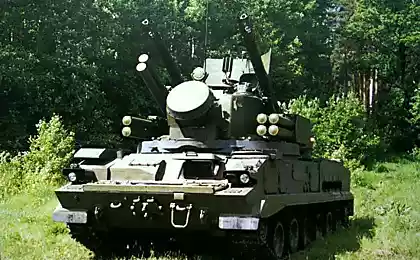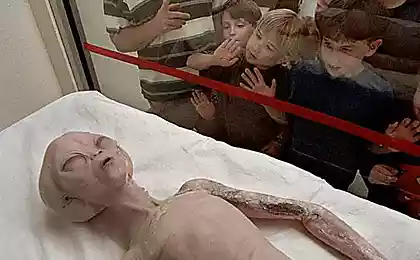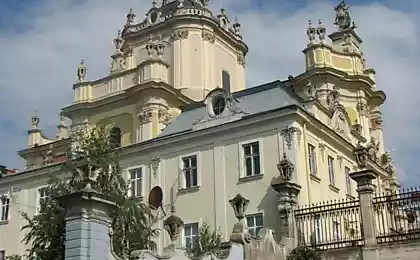1204
Museum of the history of computing
A year ago, on 12 December 2008, the Museum was opened in the history of computing at a Moscow school. Unfortunately, the museum is still not known to the general public, although many of the exhibits collected in it are really unique. The museum exhibition starts with the ancient counting devices and ends with respect to modern electronic computers produced at the end of the last century.
The popular blogger victorprofessor with Alexander Usoltsev exhaustively about the presentation of the exposition and showed her around the world
21 photos
1. Accounts and mechanical calculators. Produx produced in the 30s of the last century, controlled with the stylus it allows you to perform addition and subtraction.
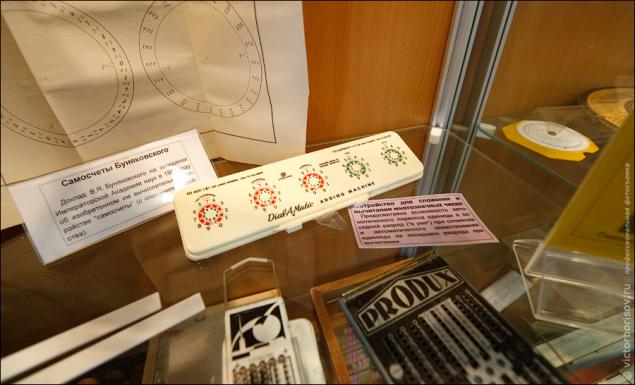
2. Slide rules. Hopefully someone else remembers that with this simple device you can perform mathematical operations of multiplication and division, and exponentiation and calculation of square and cube roots, calculate logarithms, trigonometric functions.
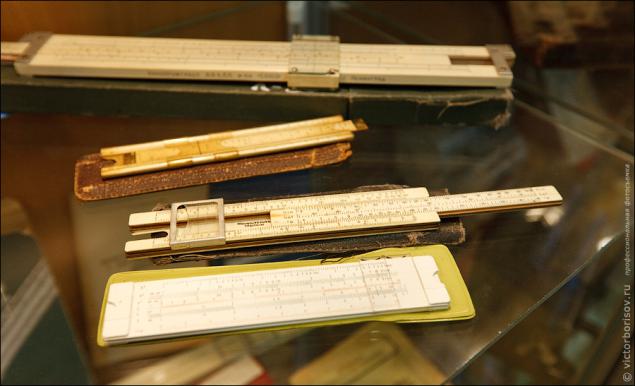
3. Classic mechanical adding machine - mechanical desktop computer intended for the precise multiplication and division, as well as addition and subtraction.
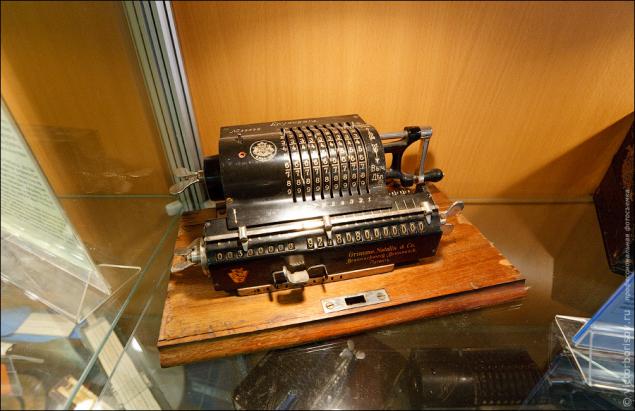
4. Automatic adding machine with button keypad.
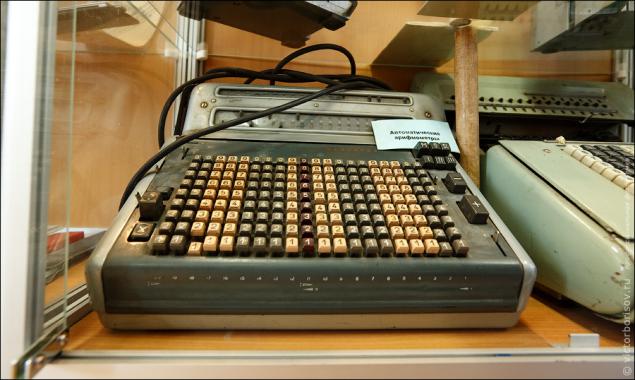
5. Huge collection of pocket calculators MK.

6. Electronics MK-85 - Soviet programmable calculator (microcomputer) with built-in BASIC language interpreter. Produced from 1986 to 2000 and was the cheapest option computers with BASIC interpreter (cost 145 rubles). At one time, under this calculator even wrote the game. Yes, by the way, pay attention to the qwerty keyboard layout and the corresponding Russian - YAVERTY. Generally, in the 80s and could not come to a unified layout symbols. Apparently, qwerty-layout calculator owes its prototype CASIO FX-700P
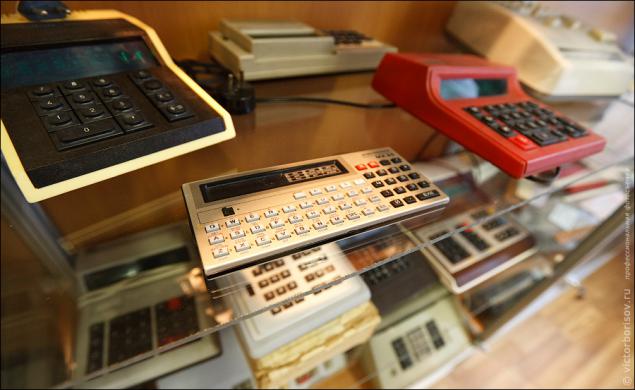
7. An apparatus for calculating statistics of the library (the number of served readers, the number of issued books of various kinds).

8. specialized computing devices and lines.

9. The microcomputer MC-90. Calculator with BASIC, and a large graphic display. It has a 16-bit processor compatible with the electronics 60, RAM - 16 Kbytes of ROM - 16 Kbytes. Crazy keyboard layout, but as the price - 1 500 rubles in 1991. In the background, his native red from imitation leather cover.
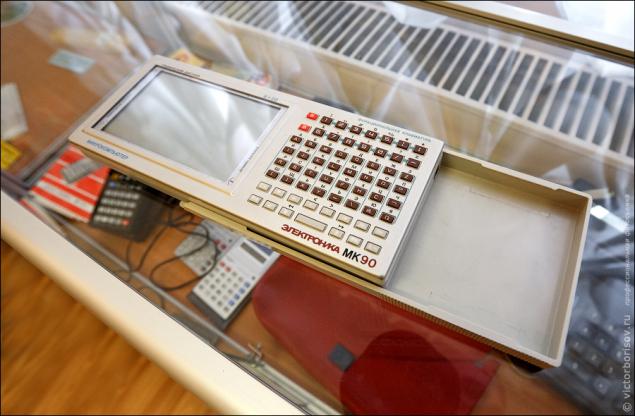
10. Punched tape - very outdated media (computers 2nd generation). To record information used hammer and the reading was performed using perfoschityvatelya. The maximum writing speed - up to 150 Mbytes / s, the maximum reading speed - 1500 bytes / sec. The recording method - mechanical method of reading - Optical.
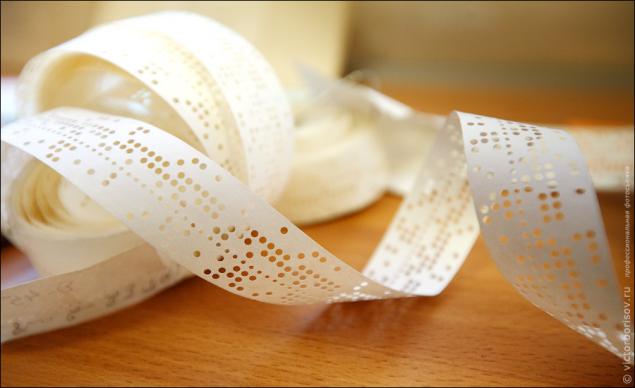
11. punch cards - media for use in automatic data processing system. Made of cardboard, punch card represents information by the presence or absence of holes in certain positions of the card. Computers of the first generation in the 20-50-ies of XX-th century, used punch cards as the primary medium for storage and processing of data. Then, during the '70s - early' 80s, they were used only for storage and were gradually replaced by a floppy disk is large. Currently, punch cards are not used anywhere except in legacy systems.
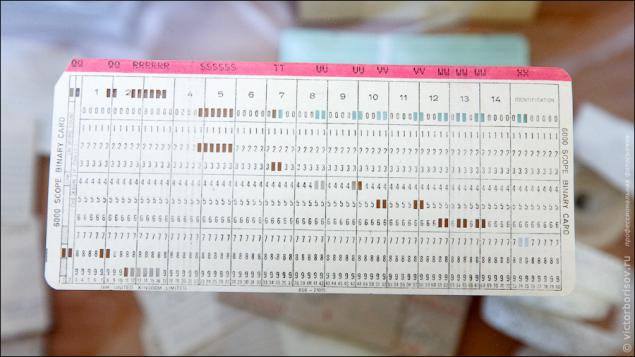
12. Metal wire recording. Information on the wire is stored in the form of the magnetization of its individual sections. The same is still used in the "black box" of aircraft, due to its high resistance to external influences.

13. The magnetic disk. 3, 5 inches, 5, 25 inches and 8 inches. The very first, in 1971, there was a 8 inch floppy disk. She could save 80 kilobytes of information. After 5 years there diskette 5 25 inches, and in 1981, Sony introduces the floppy disk 3, 5 inches.
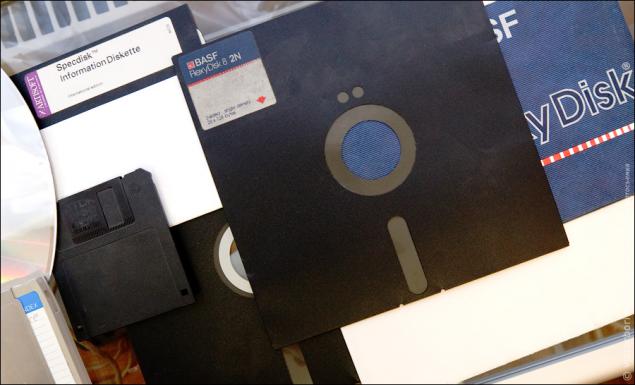
14. laserdisc. Very interesting exhibit. This is the first commercial optical data carrier is intended for home viewing of movies. The first laser disc went on sale in 1978, but unfortunately was not able to replace VHS tapes (even taking into account the technical superiority). Soon there will be DVD-drives completely ousted from the market support this format.
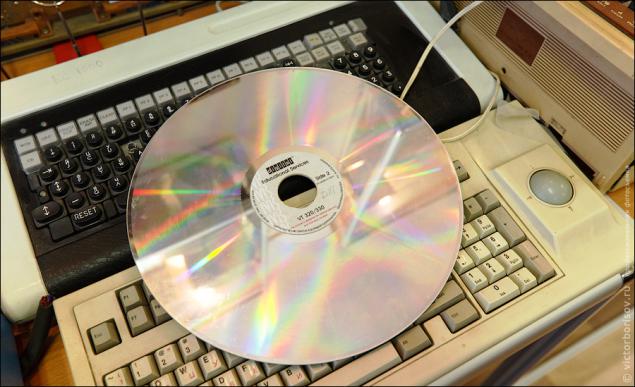
15. Batch magnetic disk of the computer series of the EU (3rd generation computers). The volume of 20 megabytes. The ancestor of modern hard disks. An interesting fact is that in the late 80s, when this type of support morally and technically obsolete, then in the Soviet Union two plates connected disk in the form of eight began to be used as a TV antenna. They say, even going to organize mass production.

16. Trigger from the first generation computer - BESM (Big electronic computer). Just BESM-1 was used 5,000 lamps.
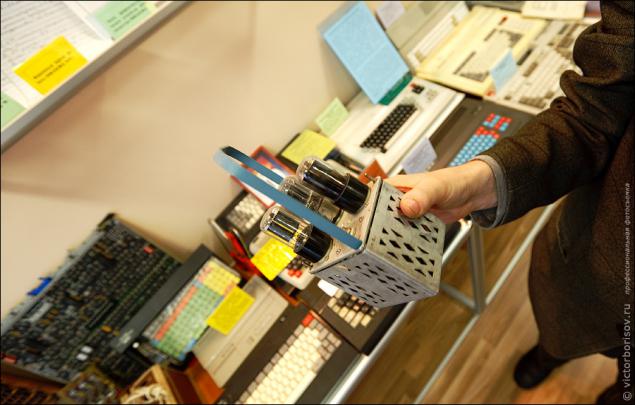
17. Large RAM module with a handle on the 2-generation computers.
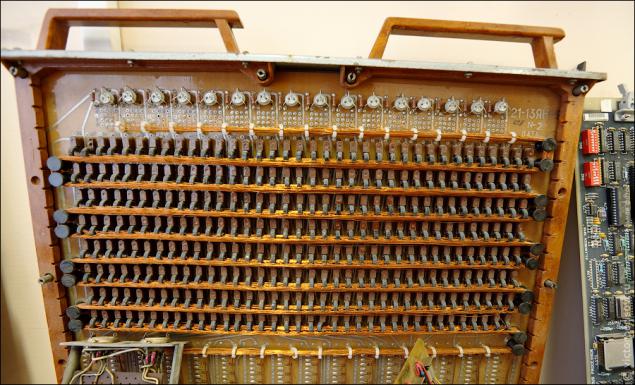
18. Personal computer Microsha. One of the first Soviet personal computer.

19. Personal computer Apogee BK-01. Here and on the last shot draw attention to the keyboard layout. Qwerty / jcuken - classics for Soviet computers.
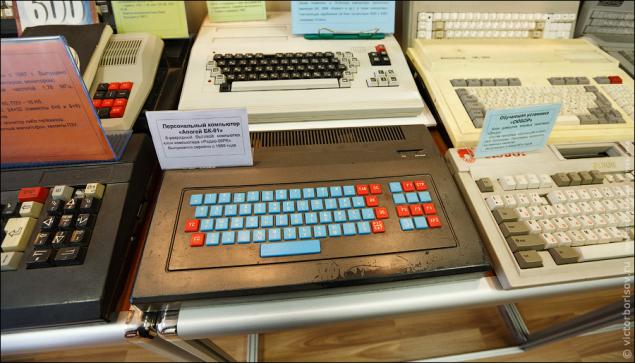
20. Lvov PK-01: 8-bit home microcomputer. Designed around 1986-1987 year at the Lviv Polytechnic Institute under the direction of assistant professor Vladimir Jakovljevic Puydy. The cost of a computer was 750 rubles.

21. General view of the museum. The museum is based on the personal collection of Dmitry Mikhailovich Zlatopolsky (pictured left).

Source:
The popular blogger victorprofessor with Alexander Usoltsev exhaustively about the presentation of the exposition and showed her around the world
21 photos
1. Accounts and mechanical calculators. Produx produced in the 30s of the last century, controlled with the stylus it allows you to perform addition and subtraction.

2. Slide rules. Hopefully someone else remembers that with this simple device you can perform mathematical operations of multiplication and division, and exponentiation and calculation of square and cube roots, calculate logarithms, trigonometric functions.

3. Classic mechanical adding machine - mechanical desktop computer intended for the precise multiplication and division, as well as addition and subtraction.

4. Automatic adding machine with button keypad.

5. Huge collection of pocket calculators MK.

6. Electronics MK-85 - Soviet programmable calculator (microcomputer) with built-in BASIC language interpreter. Produced from 1986 to 2000 and was the cheapest option computers with BASIC interpreter (cost 145 rubles). At one time, under this calculator even wrote the game. Yes, by the way, pay attention to the qwerty keyboard layout and the corresponding Russian - YAVERTY. Generally, in the 80s and could not come to a unified layout symbols. Apparently, qwerty-layout calculator owes its prototype CASIO FX-700P

7. An apparatus for calculating statistics of the library (the number of served readers, the number of issued books of various kinds).

8. specialized computing devices and lines.

9. The microcomputer MC-90. Calculator with BASIC, and a large graphic display. It has a 16-bit processor compatible with the electronics 60, RAM - 16 Kbytes of ROM - 16 Kbytes. Crazy keyboard layout, but as the price - 1 500 rubles in 1991. In the background, his native red from imitation leather cover.

10. Punched tape - very outdated media (computers 2nd generation). To record information used hammer and the reading was performed using perfoschityvatelya. The maximum writing speed - up to 150 Mbytes / s, the maximum reading speed - 1500 bytes / sec. The recording method - mechanical method of reading - Optical.

11. punch cards - media for use in automatic data processing system. Made of cardboard, punch card represents information by the presence or absence of holes in certain positions of the card. Computers of the first generation in the 20-50-ies of XX-th century, used punch cards as the primary medium for storage and processing of data. Then, during the '70s - early' 80s, they were used only for storage and were gradually replaced by a floppy disk is large. Currently, punch cards are not used anywhere except in legacy systems.

12. Metal wire recording. Information on the wire is stored in the form of the magnetization of its individual sections. The same is still used in the "black box" of aircraft, due to its high resistance to external influences.

13. The magnetic disk. 3, 5 inches, 5, 25 inches and 8 inches. The very first, in 1971, there was a 8 inch floppy disk. She could save 80 kilobytes of information. After 5 years there diskette 5 25 inches, and in 1981, Sony introduces the floppy disk 3, 5 inches.

14. laserdisc. Very interesting exhibit. This is the first commercial optical data carrier is intended for home viewing of movies. The first laser disc went on sale in 1978, but unfortunately was not able to replace VHS tapes (even taking into account the technical superiority). Soon there will be DVD-drives completely ousted from the market support this format.

15. Batch magnetic disk of the computer series of the EU (3rd generation computers). The volume of 20 megabytes. The ancestor of modern hard disks. An interesting fact is that in the late 80s, when this type of support morally and technically obsolete, then in the Soviet Union two plates connected disk in the form of eight began to be used as a TV antenna. They say, even going to organize mass production.

16. Trigger from the first generation computer - BESM (Big electronic computer). Just BESM-1 was used 5,000 lamps.

17. Large RAM module with a handle on the 2-generation computers.

18. Personal computer Microsha. One of the first Soviet personal computer.

19. Personal computer Apogee BK-01. Here and on the last shot draw attention to the keyboard layout. Qwerty / jcuken - classics for Soviet computers.

20. Lvov PK-01: 8-bit home microcomputer. Designed around 1986-1987 year at the Lviv Polytechnic Institute under the direction of assistant professor Vladimir Jakovljevic Puydy. The cost of a computer was 750 rubles.

21. General view of the museum. The museum is based on the personal collection of Dmitry Mikhailovich Zlatopolsky (pictured left).

Source:



